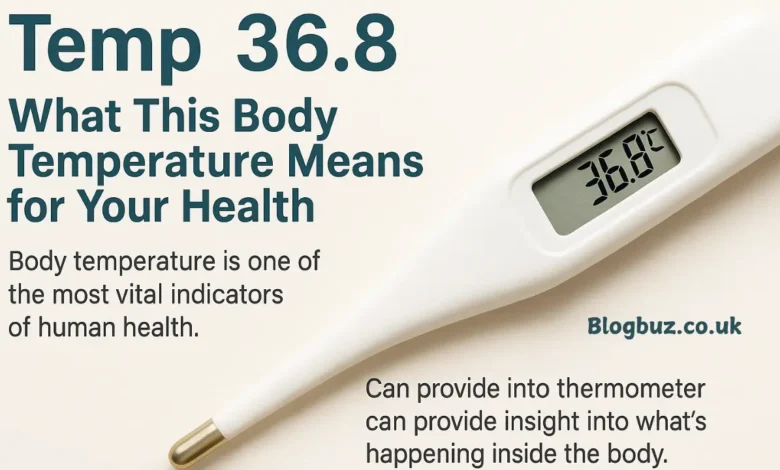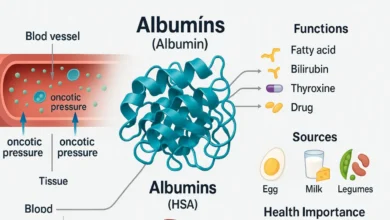Temp 36.8: What This Body Temperature Means for Your Health

Body temperature is one of the most vital indicators of human health. The number on a thermometer can provide insight into what’s happening inside the body. While 37°C (98.6°F) has long been considered the “normal” body temperature, slight variations are common. One such example is temp 36.8, which often raises questions about whether it indicates good health or a possible issue. In this comprehensive article, we’ll explore what a temperature of 36.8°C means, when to be concerned, and how it relates to your overall health.
Understanding the Basics: What Is Normal Body Temperature?
Before delving into temp 36.8, it’s essential to understand what constitutes a “normal” body temperature.
Average Body Temperature
Traditionally, a body temperature of 37°C (98.6°F) was set as the standard. However, modern research shows that average body temperatures can range from 36.1°C to 37.2°C (97°F to 99°F), contingent upon a variety of factors, including:
- Time of day
- Age
- Gender
- Activity level
- Method of measurement (oral, rectal, ear, armpit)
So, temp 36.8 lies comfortably within this accepted range of normal, suggesting that it is typically not a cause for concern.
Temp 36.8: Interpreting Its Significance
So, what does a temp 36.8 mean?
A Sign of Stability
In most cases, a reading of 36.8°C means your body is functioning optimally. It implies that your hypothalamus, responsible for regulating body temperature, is maintaining homeostasis effectively. This temp is often observed:
- In the early morning, when body temperature is naturally lower
- In adults who are resting or not physically active
- After mild exposure to cool environments
Context Is Key
The interpretation of temp 36.8 depends heavily on context. For instance:
- After intense physical activity, it may suggest that your body has cooled down efficiently.
- During illness recovery: Could indicate your fever has subsided.
- In children: Typically within normal limits unless accompanied by symptoms.
- In elderly individuals: Normal, especially since aging can lead to slightly lower temperatures.
Temp 36.8 and Fever: Is It Low or Normal?
When evaluating temp 36.8, people often wonder if it’s considered too low or a sign of an underlying issue.
Not a Fever
Fever is typically defined as a temperature of 38°C (100.4°F) or higher. Since 36.8°C is well below this threshold, it is not a fever. It indicates no current signs of acute infection or inflammation unless other symptoms are present.
Is 36.8°C Low?
A low body temperature (hypothermia) is defined as below 35°C (95°F). Thus, temp 36.8 is far from this category and is usually a marker of good thermoregulation rather than concern.
Factors That Can Affect a Temp of 36.8
Several variables can lead to a temperature reading of 36.8°C, even within the same individual on different occasions.
Time of Day (Circadian Rhythm)
Your body temperature fluctuates throughout the day:
- Morning: Lower readings (36.1°C to 36.8°C)
- Evening: Slightly higher (up to 37.2°C)
Measurement Method
- Oral thermometer: Commonly yields readings around 36.8°C
- Ear/rectal thermometers: May show slightly higher readings
- Forehead/axillary thermometers: Often slightly lower than oral
Physical Activity
After exercise, your temperature may rise and then return to around 36.8°C during recovery.
Ambient Temperature
Colder environments may slightly lower body temp, while warm conditions might increase it temporarily.
Temp 36.8 in Different Age Groups
The interpretation of a temperature of 36.8 may vary depending on a person’s age.
In Infants and Children
- Typically, the temperature ranges from 36.5°C to 37.5°C
- 36.8°C is normal and doesn’t usually require any action
In Adults
- Most adults fall between 36.1°C and 37.2°C
- 36.8°C is a standard reading, often showing the body is in balance
In Elderly
- Older adults may have lower baseline temps (as low as 36.0°C)
- Temp 36.8 in elderly individuals may be on the higher side for them
Medical Conditions and Temp 36.8
While temp 36.8 is usually normal, certain conditions can influence how you interpret it.
Thyroid Issues
- Hypothyroidism: May cause consistently lower body temperatures
- If you usually run cooler (e.g., 36.3°C), then temp 36.8 might feel like a “fever” to you
Infection Recovery
- If you’ve recently been sick and your fever broke, temp 36.8 may indicate returning to baseline
Hormonal Fluctuations
- Women may notice body temperature changes related to their menstrual cycle or ovulation
- During ovulation, basal body temperature may rise to around 36.8°C to 37°C
When Should You Worry About Temp 36.8?
In general, temp 36.8 is not a sign of danger. However, there are exceptions:
When to Watch Closely:
- Accompanied by severe symptoms like chills, dizziness, or fatigue
- If your normal temperature is higher or lower, and this change is unusual
- If it follows injury, trauma, or medication use
It is recommended that you seek the advice of a medical professional in such instances, even with a “normal” temperature.
Monitoring Body Temperature at Home
To assess whether temp 36.8 is part of your normal, consider keeping a body temperature log.
Tips for Accurate Readings:
- Use a digital thermometer with good reviews
- Measure at the same time each day
- Take readings before eating or drinking
- Track temperature over several days to see your pattern
Having this baseline makes it easier to spot when something is off—even if the temperature seems normal.
Conclusion: Is Temp 36.8 Normal or Not?
Temp 36.8°C is widely considered normal and is a reassuring sign of physiological balance for most people. While not the textbook 37°C, it still falls well within the healthy range and typically doesn’t signal illness or concern—unless accompanied by other symptoms or significant deviations from your norm.
You May Also Read: How to Monitor Your Temperature for Flu, COVID-19, and Other Illnesses




